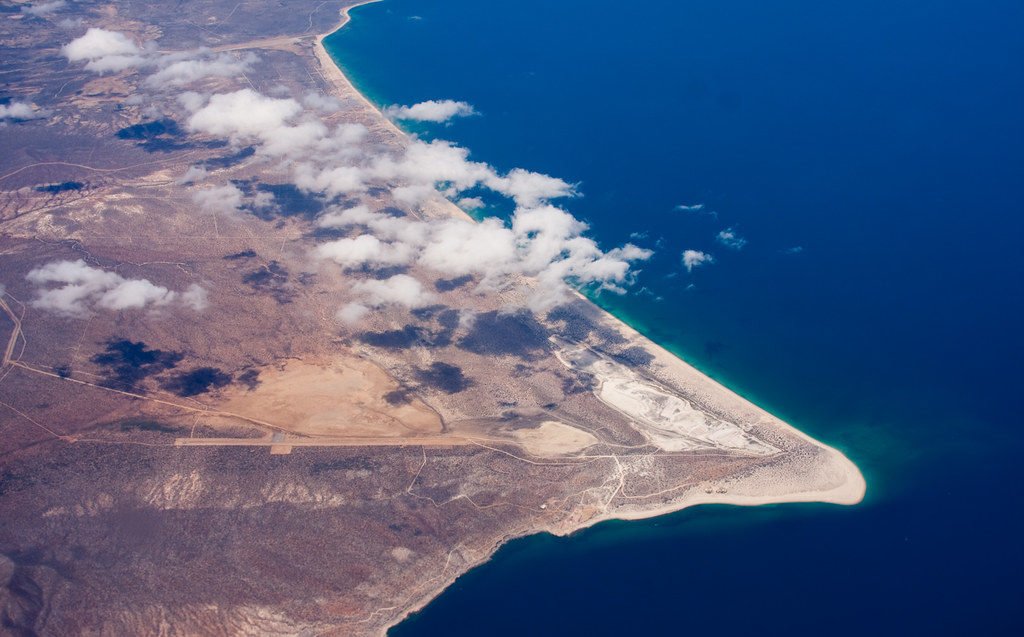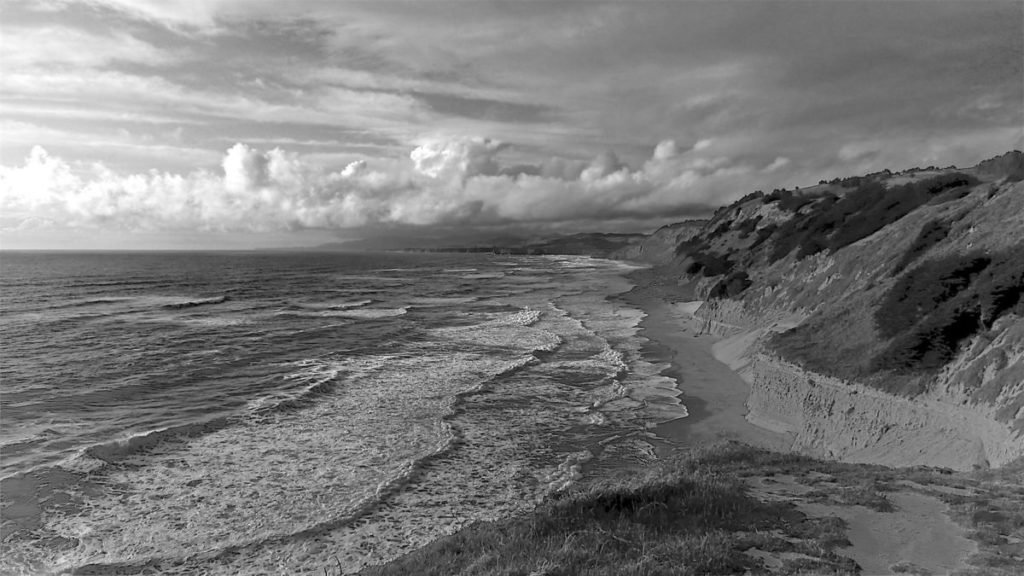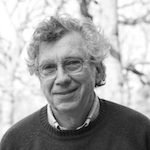I never thought that by agreeing to teach a class in anthropological fieldwork I would soon be expected to be a spiritual healer. I should never have agreed to teach the class. I had never done fieldwork, so I had no experiences to draw on in teaching the class. Luckily an anthropologist colleague, Mike Kearney, invited me to join him in doing fieldwork in Baja California, Mexico. Our university was a four-hour drive from the community in Mexico where he was studying spiritual healers (espiritistas), so we could go there on weekends and between school terms. I was grateful for the chance to accompany him and also grateful that Mike was fluent in Spanish and willing to be my translator.
Our first Sunday in Mexico we drove to the templo (temple) where Doña Clara, the most prominent of the twenty-two spiritual healers in the community, held services. We were too early. Nobody was there. Since we were only a few hundred yards from the Pacific, we decided to go wading. We drove to a small beach, took off our shoes and socks, and rolled up our pants legs. I went into the water and was immediately in trouble. The ocean waves were strong, and there was no sand under the water, just masses of rocks. I was ten feet out when I jammed my right foot between two rocks and was instantly in great pain. I pulled my foot loose and limped out of the water. My foot ached, and the second toe was throbbing, turning purple and swelling. I put my socks and shoes on and limped after Mike back to his truck for the short ride back to Doña Clara’s templo.

We joined the thirty people who were already there and who were being cleansed with aromatic smoke from a pan of burning copal resin as they filed into the templo. The templo was a single large room with eight rows of benches facing a low platform on which Doña Clara would stand when leading services. To one side of the platform was an altar with a picture of the Virgin Mary, a cross, half a dozen burning candles, plastic flowers in a vase, and bottles of salve and aromatic liquids.
Doña Clara stood beside the altar, a short, somber, gray-haired, heavyset woman in her 50’s. She saw that I was limping, strode over to me, and asked what was wrong. We explained my problem to her, and she told me to sit down and take off my shoe and sock. She looked at my swollen, purple toe, went to the altar, and brought back a bottle. She poured an aromatic, floral smelling liquid from the bottle into her hands and started massaging my toe and foot. The massaging hurt. I was afraid that I had a fractured toe and that she was going to turn it into a compound fracture. As she rubbed my foot and toe she said a prayer. At the same time people sitting nearby rubbed the palms of their hands together and swept symbolic good wishes out of their hands toward me. In a minute Doña Clara finished massaging my foot and toe and returned to the altar.
I put on my sock and shoe and sat through a service in which Doña Clara seemed in a trance and was providing the voice for her spirit partner. Half a dozen people petitioned her spirit partner for help, including a woman worried about her child eating paper and a young man who wanted to quit being a drunk. The congregation sang hymns and rubbed good wishes from their palms at those who were receiving healing attention from Doña Clara and her spirit. At the end of the service everyone sipped specially blessed water out of a glass passed from person to person, and then formally embraced anyone who was within reach.
Two weeks later we returned to Doña Clara’s templo. My toe and foot were much better, and I walked without a limp. Doña Clara was approving. My having recovered proved to her that I had faith in God, because she and the other healers believed that without faith I could not recover. They also believed that only people who had proven their faith in God by recovering from something can become healers. All the healers had recovery stories.
Mica was my favorite healer. She was short, middle-aged, energetic, and obviously very intelligent. Mica was born in Chihuahua State, Mexico, and became orphaned at age eight. A neighbor woman adopted Mica, cared for her, and loved her. But when Mica was in her early teens, the woman was murdered, so Mica became an orphan again. In her late teens she found her way into a temporary romance and soon had a son. For years the son was the focus of her love and her life. When he was a young adult they decided to move to Ensenada in Baja California, Mexico. Shortly after they moved, her son fell in love with a young woman and left Mica. This loss was too much for Mica, and she started wandering the streets of Ensenada, weeping, hallucinating, and not taking care of herself. Soon somebody took her to an espiritista. The espiritista worked to bring Mica back into some kind of focus and capacity to relate to others and told her that one of the things she had to do was to find a younger man to be her lover. The idea underlying the recommendation was that energy flows from younger sexual partners to older ones, so the espiritista was prescribing for Mica a path to greater energy. And it worked. Mica found Miguel, they partnered, and she was soon living an energized life. As part of that, she became an espiritista and was in joint practice with a physician. When he saw patients at his clinic, she waited in the back area, and he would send her patients who he thought needed what an espiritista could provide.
Mica was witty, curious about everything, and at times delightfully irreverent. I also thought she was very wise. So when a family issue emerged for me, I asked Mica for advice. My wife and I had a new baby and had worked hard to prepare our four year old son for the baby. (“The baby will grow up to be your playmate and best friend.” “Babies are a gift to love and be loved by.”) I thought we had prepared our older son well, but within a few days of his brother’s arrival, our older son was saying things like, “Take him away. He makes me want to throw up.” And we were afraid he would hurt his brother. So I brought the problem to Mica. She laughed and said, chipiloso, which she said was a word for the feelings of jealousy and neediness of an older sibling following the birth of a younger one. So I asked her what to do about chipiloso. Mica laughed and said, “Love them a lot and get a bigger house.”
Mica was the espiritista we spent the most time with, but Doña Clara was the dominant and most influential espiritista in the community, and so I had to work with her in order to find my way among the espiritistas. That meant that I needed her approval to do my ethnographic field work with the espiritistas. Luckily, she knew about the healing of my injured toe. Showing that I had faith in God by recovering from my sprained toe meant that when I asked Doña Clara whether I could study spiritual healing with her, she immediately said “Si!” But as she talked it became clear that she didn’t understand what I had asked. I had asked to be an observer, but she said she would help me to become an espiritista. I let the misunderstanding go by without comment, with no clue what trouble my letting it go by would make for me.
Over the next months I met many of the other espiritistas. Unfortunately, my Spanish was not improving. I struggled to understand almost anything anybody said, and after fifteen minutes of trying to understand what was being said at a religious or healing service my mind stopped functioning. So I started bringing a tape recorder to services, hoping to get on tape what I wasn’t following and understanding.
At one Sunday morning religious service I was sitting on the back bench with Mike in the two-room house of one of the espiritistas. There were roughly 25 people sitting on benches in the room that served also as living room and kitchen. We faced into the bedroom, where there was an altar, a wardrobe, and a double bed with a baby sleeping on it. I was mentally exhausted from trying to follow the service and was counting on the tape recorder to capture everything being said. I wasn’t paying attention and was in something of a trance. Suddenly everyone on the benches in front of me turned and looked at me. The woman immediately in front of me motioned me to get up and go to the altar. I was very anxious, but I got up and walked to the altar.
The healer, a tall woman in her thirties, was channeling the spirit of Christ, who spoke through her in Spanish, in a deep and powerful voice. I stood humbly and anxiously before the epiritista and Christ. Talking through the espiritista Christ told me to turn off the recorder (la grabadora), that “Everything worth remembering will be ‘engraved’ in your brain.” Then Christ opened a symbolic “valise” in my chest and put a drop of his blood there, telling me that whenever I wanted to heal I could use the healing power in that drop of blood. Then I was told to sit down. I said a very humble gracias and returned to my seat.
I decided to leave the tape recorder running. I thought nobody would know I was doing that, and I wanted to capture whatever I could of the service. The next day, when I was back on campus, I tried to listen to what I recorded, but the tape was blank. I didn’t want to believe that my recording had been blocked by Christ, who knew I was not following his order to turn off the recorder. I knew that my recording the service was worrisome to the healer because she was concerned that I might capture evil spirits in the recorder and use those spirits to cause great harm. She was especially concerned that I might use evil spirits I had captured with my tape recorder to sexually exploit women. Perhaps my tape was blank because I had not pressed the “record” button, but I could not dismiss the idea that my recorder had been neutralized by a spiritual force that was concerned that I might be capturing evil spirits in order to take advantage of women.
Then there was the problem of what I was going to do with my new responsibilities as a person with healing power. How could I heal when my Spanish was so pathetic? And although I was learning to appreciate and respect the realities of the healers and their community, I didn’t believe in the spirits or the spiritual forces they believed in. How could I dare to try to heal as a nonbeliever? Even if I could miraculously become fluent in Spanish, as a nonbeliever I would be faking it. Pretending to channel a spirit and to heal when I was not a believer would be unfair and disrespectful to the people who wanted genuine healing. I could even imagine that if there were spiritual forces in play, they were not likely to be available to fake healers. It was time for me to quit visiting the community.

I regret quitting. I still had much to learn about spiritual healing and fieldwork, and I wanted to become fluent in Spanish. I would have liked to have a better understanding of how the healers and the people who came to them understood things. At the time I stopped accompanying Mike to the community I did not believe in the spirits that were central to the work of the espiritistas. But in more recent years I have come to a different way of thinking about the spirits. I never gave the spirit world a chance. I never opened myself up to whatever there might be, if there was anything. So if I had my life to live over again, I think that I would not withdraw from the community of healers but continue to visit them, continue to try to learn from them, work harder at improving my Spanish, and open myself up to feel and think whatever there was to feel and think about spirits. I would want to try to accept and even embrace the realities of the healers and those who came to them for help and see where that led me.
I assume that I have only one life to live, but in the thinking of some people in that community there is a possibility for me to have other lives and eventually do what I regret not having done. Maybe I will have an opportunity to live my life over and become a healer. That kind of thinking comes in part from Doña Clara. One Saturday night Mike and I dropped in on her. She invited us to sit in the front room of her two room place, a room illuminated by two flickering candles. She looked exhausted and very old. As we sat down, a man who looked much older than she and who had been in the shadows walked slowly out of the room. I asked if he was her father. She said he was her son, and he was an alcoholic and dying. Saying what she said about her son led to her talking about her personal history. She said that this was her fourteenth incarnation. In each of her thirteen previous lives she had been a man and, like her son, had been very sinful. Because of the sinfulness of being a man, at the end of each of those lives she could not go to heaven but had to be reincarnated. Now, after 13 lives as a man, she was a woman and could finally go to heaven.
What if she was right about men having to be reborn again? Having been a man in this life, will I have a next life in which I can deal differently than I did in this one with the opportunity to learn how to do spiritual healing? If I have another life can I become fluent in Spanish and a true-believing espiritista? Would I be able to find and channel a spirit? It could be quite an adventure to have a relationship with a spirit. If my experience with the recorder malfunction was any indication, a spirit has the power to make surprising things happen.

Share this post with your friends.

